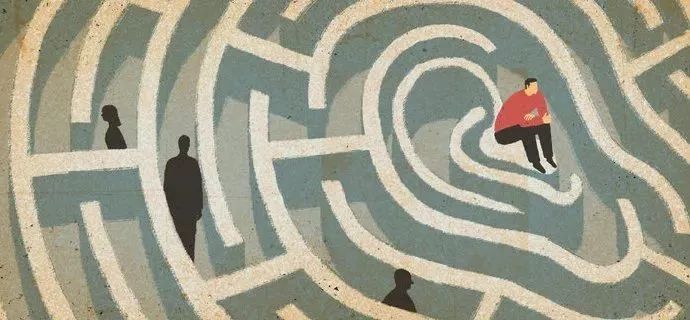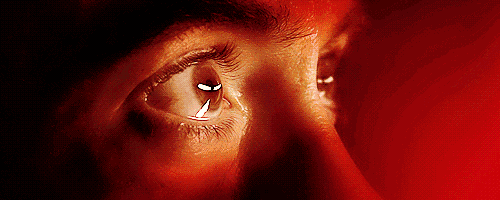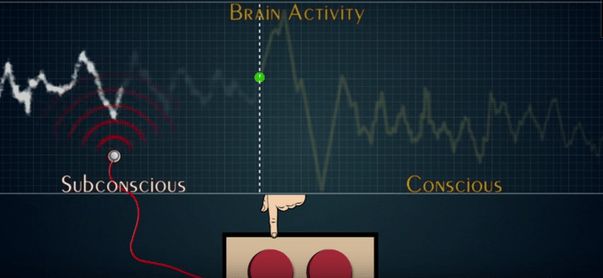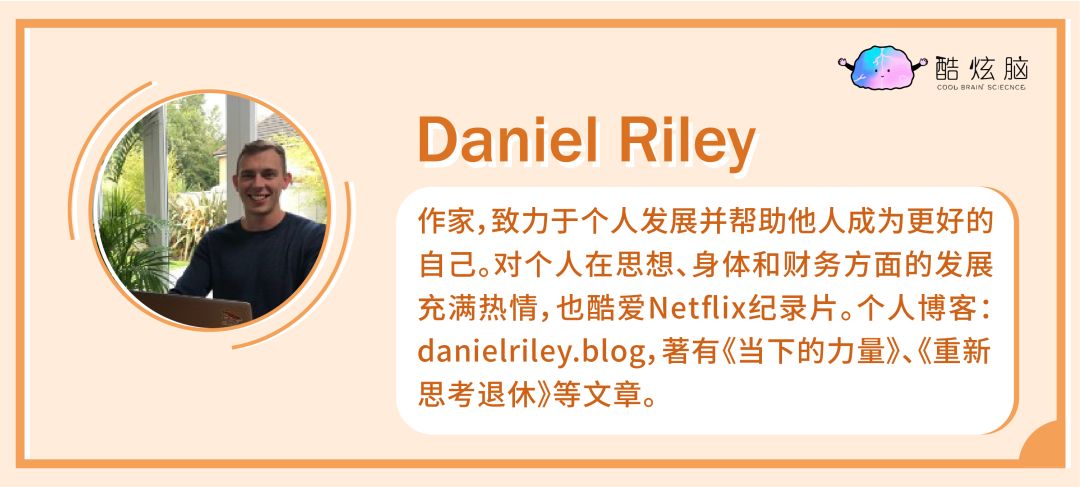Your brain is making a story blindly, but you believe it
Author:Cool brain Time:2022.09.18


Italian illustrator Davide Bonazzi
The following is the full -text audio of reading the little brother
BGM: Zachary Bruno -Distant Echoes
Author | Daniel Riley
Translation | SAM
Grand Entry | Cool Brain Main creators Qin Feng
Reading | Yikes
Artist | Soy Milk
Edit | Lingyu
The inner voice often guides the world of our lives in an unreliable way. We must learn to accept its limitations and use it wisely to navigate our internal and external world.
The word "Homunculus" can be understood as "villain". This is not just to challenge the short height, but refers to the villain living in our minds. More accurately, it is a person who lives deep in our hearts and tells us stories.
Yes, what I am talking about is the "person" who is reading this sentence. The person who makes all major decisions in life tried to explain the person we did. Be careful to call the teacher the embarrassing little thing like "mother".
This villain is a fictional character, which is used to describe our inner voices -he tells us what we have done, what we are doing, and what we will do. Our narration not only covers ourselves, but also cover others. We will tell the behavior and worldview of the best friend. We will tell how celebrities, politicians and grandparents, telling how they view the world, and what their narratives look like. We are dominated by the story. These stories determine how we look at the world around.

"iron Man"
Maybe we do n’t realize that although we have been listening to our inner descriptions, it is not as important as we imagine. The "villain" deep in our hearts is created by ourselves, independent of the world and real life. The reason we have this inner narrative is simple: it can help us live better. The reality of the universe space, economic system, and football video games is too complicated, so that one person and even many people are unable to understand. Therefore, after we simplify, we narrate the story to this "villain" to understand, and then continue our daily life.
The problem of narrative is that we not only use it for big problems, we will always use it all the time, even in a relatively insignificant place in life. Seth Godin tells the story of a woman who is meditating at the quiet place, and she is sitting next to a particularly troubled person. The woman was trying to meditate, but was constantly divided by the "click" of the person next to him.
In the first half of Jing Xiu, she did not complete any meditation, but had been irritable for the brilliant person next to her. During the rest in the middle, she went to the person who made the annoying click to confront, saying that he let him completely lose his good experience of meditation. When she was about to talk to him, she heard a click again. She realized that it was not that he made a click, but the radiator in front of him.
From that moment, although the sound did not change, the click noise continued the whole quiet repair, but suddenly she relaxed. This is a clicks of the radiator, not from a rude person. The only change was her inner narrative, from "a impolite person deliberately made me troubles" to the background noise of the radiator. This example illustrates how powerful our narrative is and how they distort reality.

"Detective Sherlock"
Science of the inner narrative
The story of the inner narrative and the villain who lives in our minds may be interesting, but as far as they are concerned, they cannot represent anything. Fortunately, this topic has also been solved by people who know better than me in the scientific community.
In a wonderful blog post in moretothat, "How to calm and anxious brain" explains the physiological process of stress reaction and closely linked with our inner narrative. When we are stimulated by our body or emotions, the mound will send two signals: one signal is passed to the almond core, and the other signal is passed to the forehead cortex.
We can imagine Qiu brain as the post office that feels in the brain, and is the signal sender of the brain. Almond cores are homes with original reactions, such as fear and anxiety, and are responsible for the "war or escape" reaction. The prefrontal cortex is a place where rational decisions and judgments are made. During sleep, most of our forehead leaf cortex is closed. This is why no matter how ridiculous we have to dream, we often feel very real.
Qiu brain will send out the objective information of just happening, and both almond core and frontal lobe cortex can receive the information. However, the connection path with the prefrontal cortex is longer than the connection path with the almond nucleus, which means that all messages reaches the almond core before reaching the prefrontal cortex. Our panic center will always send an alert before understanding this information. When the almond nucleus stimulates emotions, the forehead cortex is trying to try to understand their meaning.
What does this mean for our "villain"? It means that before he had the opportunity to rationally understand what happened, he had already felt fear, ecstasy, pain, or anxiety. The current situation. This villain is like us, and we will have such an experience. "Brain Agent Team"

How many times, you have felt anxious in some cases, and then panicked to understand why we are so anxious, and then said, "Oh, it must be because of this incident again It's. "
Maybe you once hit someone else without real thinking, and then either try to rationalize this (why do I do this?), Or quickly and rationalize it into a heart narrative (this is what he deserves) Essence
This is about to blame the shorter connection of the almond nucleus and the long connection of the prefrontal cortex. We often feel some emotions inexplicably, and then use the order of receiving signals in different parts of the brain to describe why they feel them. The story created in this case is usually not real, but it can make our lives look simpler.
Box experiment
Because I want to reflect the science here, I will introduce another experiment to distinguish these annoying narratives and intention perceived in real life.
A blogger named VSAUCE, Michael Stevens, tested whether we can really control our behavior as we think in the famous YouTube series "soul field". That is to find out whether our brain's control center really has an all -round villain, instructing what we should do and what should not do. The experiment is:
Participants bring a hat full of cables to track their brain activities. Experiments require participants to press the luminous button on the equipment in front of them, but they can only press the button when the buttons are destroyed. If the button is on, press it. They think that the test is their own reaction, but not just that ...
First of all, everything goes well, the lights are light up with random intervals, and the participants can press it without barrier. However, when researchers began to use equipment that tracked brain activities, the experiments became much more interesting. The device can detect when the participants intend to reach out and press the button, and then lighten the lights before they press the button. Watching these participants constantly touched the buttons, but the lights were lit before they pressed, so the participants could not handle it. This is really interesting and fascinating.
So what happened here? The screenshot in The Video shows this fascinating graphic:
Soul

The process of pressing the button is this: Press the decision of the button first appear in the subconscious of the participants. This is the first activity of the brain when the subject will press the button. Then there was a key point -the brain activity entered the consciousness level -the participants realized that they had to press the button at this time.
The device will be aware of the signal of the brain's subconscious activity and can light up the button before the participants reach out to press the button. In other words, the device already knows when the participants are going to press the button to press the button. Participants tried a variety of thinking skills and tried to cheat the machine. For example, pretending to press the button in the brain, but did not work.
Experimental significance
So what does this have to do with our inner narrative and villain? This experiment tells us that these actions may have been determined before we decide what we have to do. At least in this case, the decision of pressing the buttons first happened in the subconscious, and we could really realize it later.
In other words, the description will only appear after things happen. The "villain" in the brain was located on the line where subconsciousness and consciousness met. He didn't realize that the subconscious had decided to press the button, but joined halfway, thinking that he was the one who started to act.
It seems that our inner description is only part of the task. We cannot understand all the subconsciousness, as well as all activities, influence and decisions there. However, if we only realize the second half of the decision process, and choose to weave our inner narrative based on this small part, how reliable these narratives are? If we only use part of the picture to create all stories, how real these stories are?
"Psychologist"

summary
It is a long journey to reach this stage. From the inner narrative of our daily life to the radiator that made a click, from the long and short nerves to the charming box experiment, I feel that we have been sitting on the roller coaster and shuttling on the intricate thinking network.
I hope we have realized that although our inner narrative often determines most of our lives, they are just guiding the world of our lives in an unreliable way. Like the commentators in the sports industry, we convey to ourselves just what happened, and the meaning of the aftermath, whether right or wrong.
I hope we have realized that the "little man" in the brain is just a group of people who were pulled by a group of wild dogs. He learned the barbaries and pretended to be the person responsible for the sled. Run the direction you want to go, and this villain, that is, ourselves, are just pulled away. Because the inner narrative is a powerful force in our lives, it is difficult to distinguish between our narrative and reality. Many of others and I discovered that one of the best ways is to regularly practice mindfulness. When we see emotions and thoughts, but do not force ourselves to give them any meanings or narratives, it is a very powerful thing.
It seems that our inner description is often responsible for our lives. Whether it is good or bad, they are usually we look at the world and our own shots. However, what we need to make in the end is a conscious choice: we must accept the limitations of our inner description, and use it more wisely to navigate our internal and external world.
Reference
[1] How to call the anxious brain. (2019, september 25). Retrieve from https://moretothat.com/how-calm-anxious-brain/.
[2] vsauce. Youtube, February 8, 2017.https: //www.youtube.com/watch? V = lmi7nnmqwlqlist = PLZRRXQCAEJQYEUYFAMCAZLL0vqdkij2index = 608S.
This article is Netease News · Netease "Each attitude" characteristic content
Click here, let friends know that you love brain science



- END -
Don't forget!Don't forget!Self -improved!Self -improved!

In front of Shenyang September 18th History Museum SquareStanding quietly with a s...
Hubei Province's 2022 college entrance examination arts, sports, and skills college entrance examinations are scheduled!

ArtFine Arts and Design ClassDrama and film and television literature (director of...